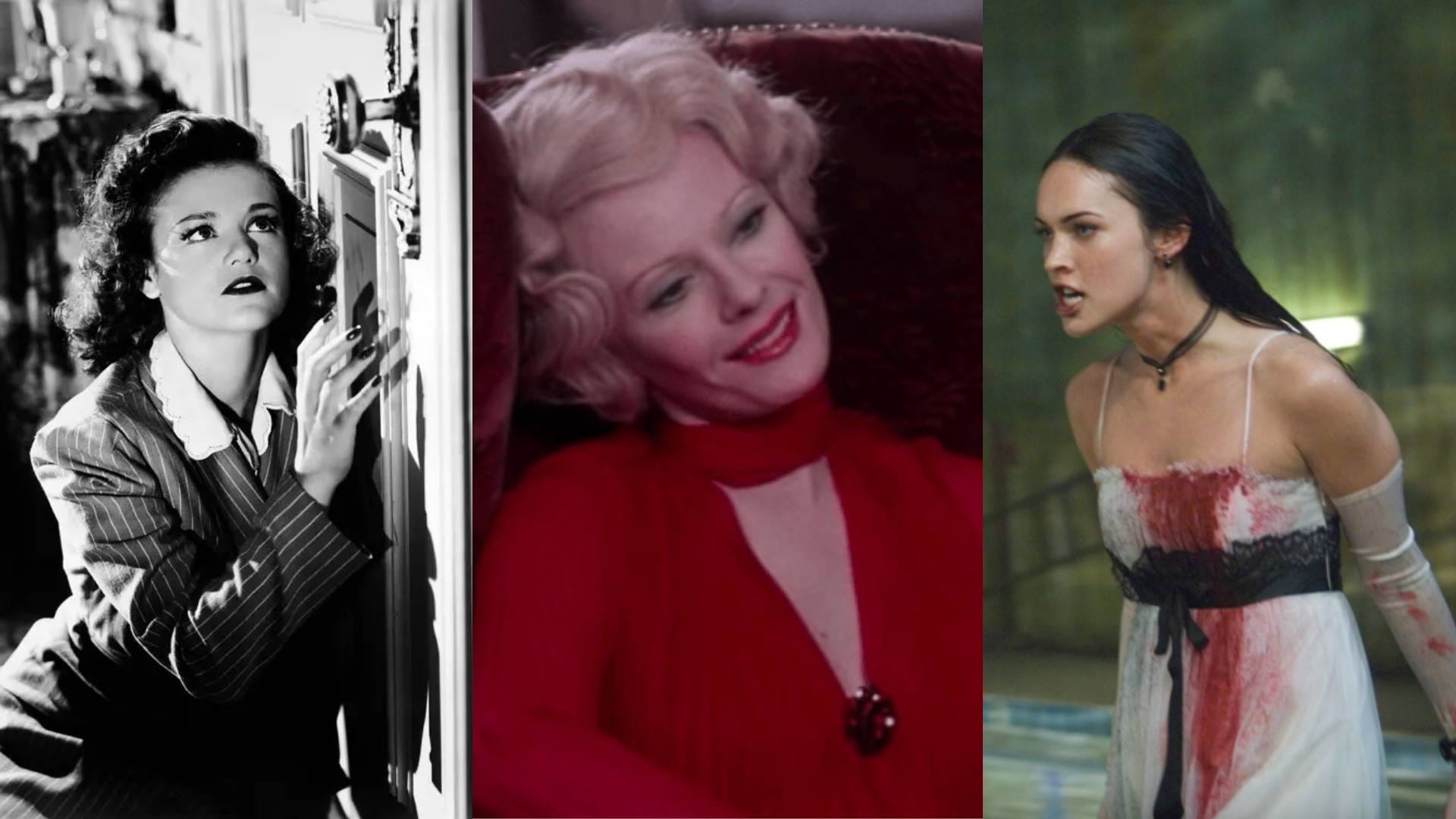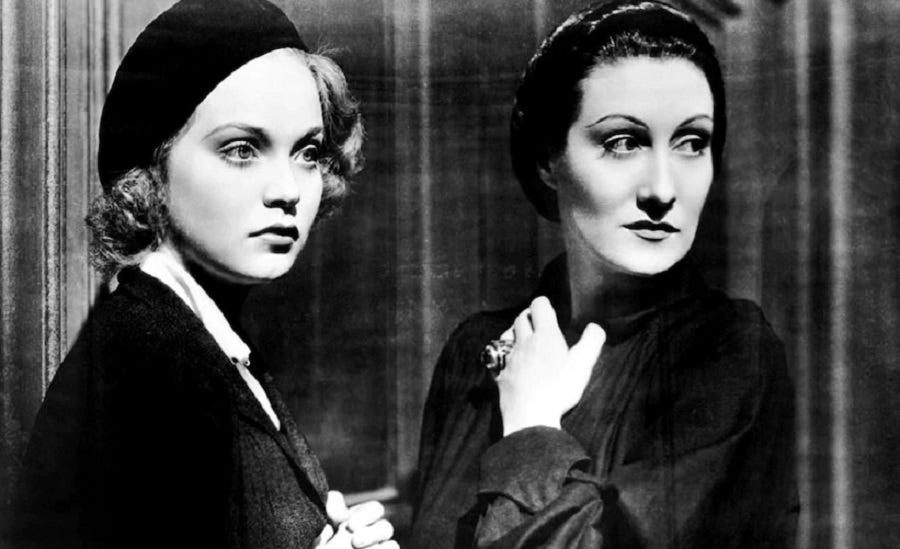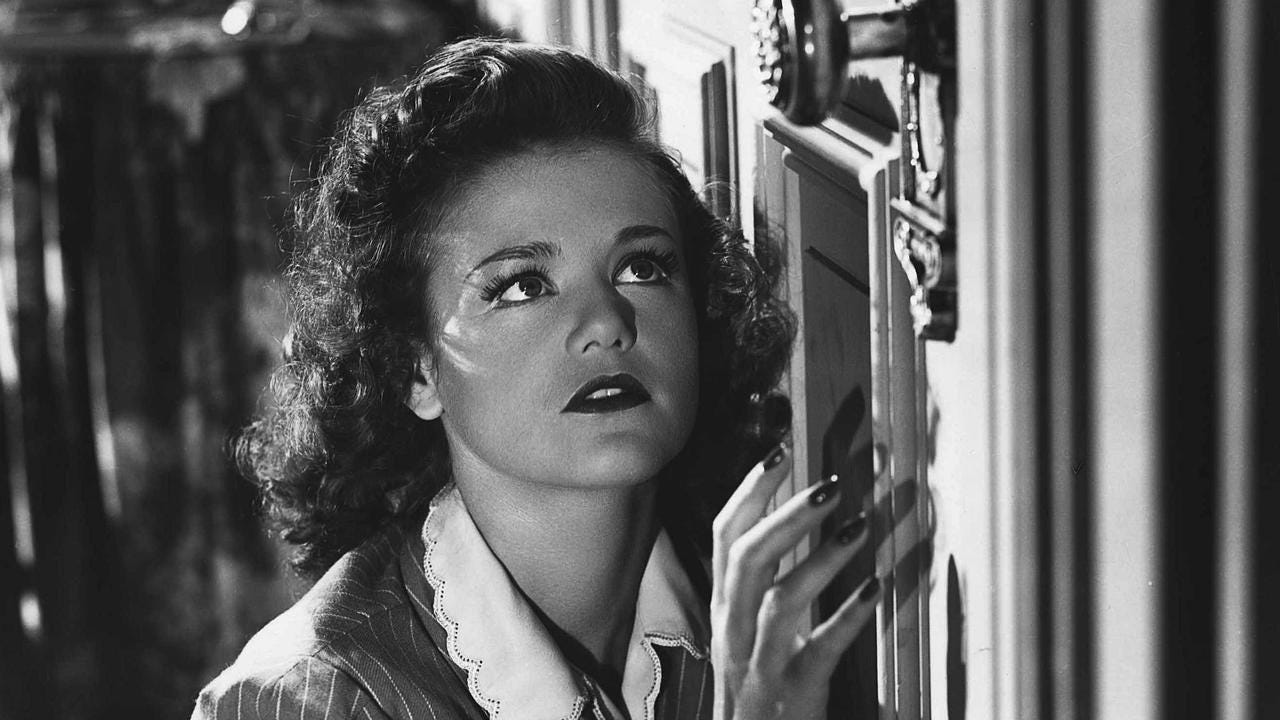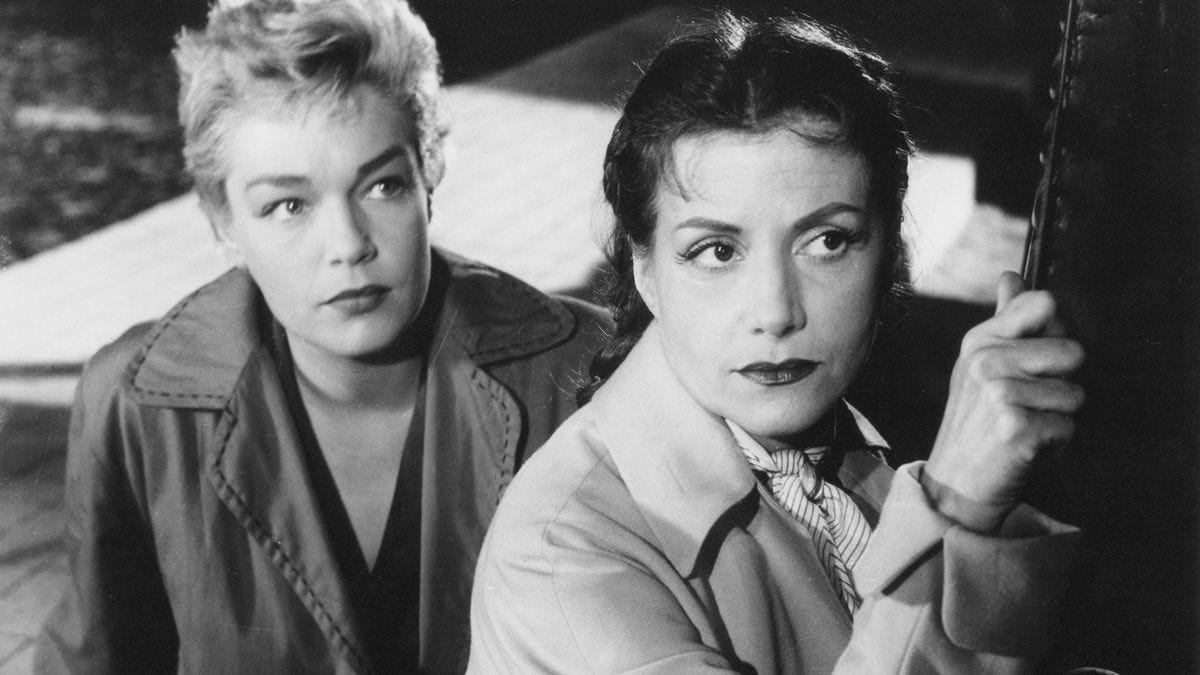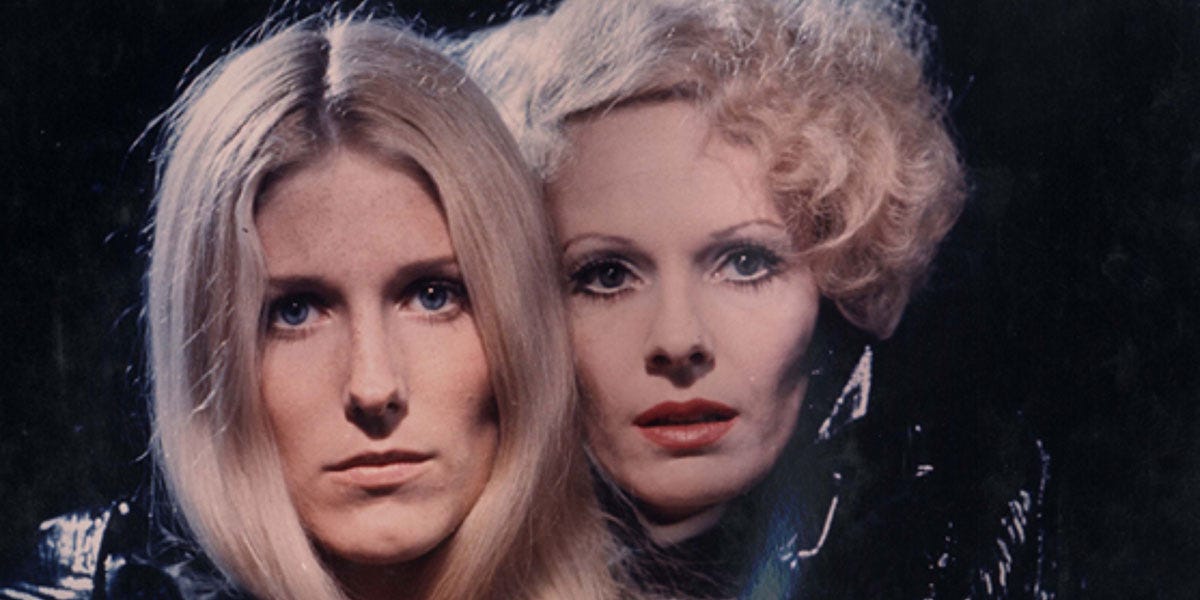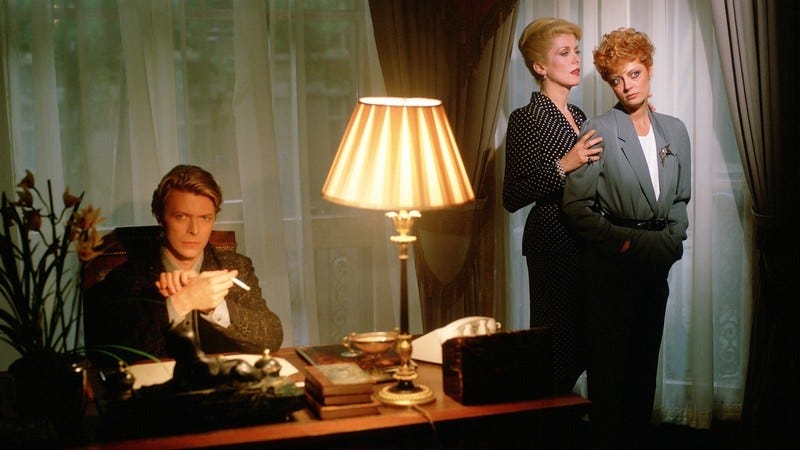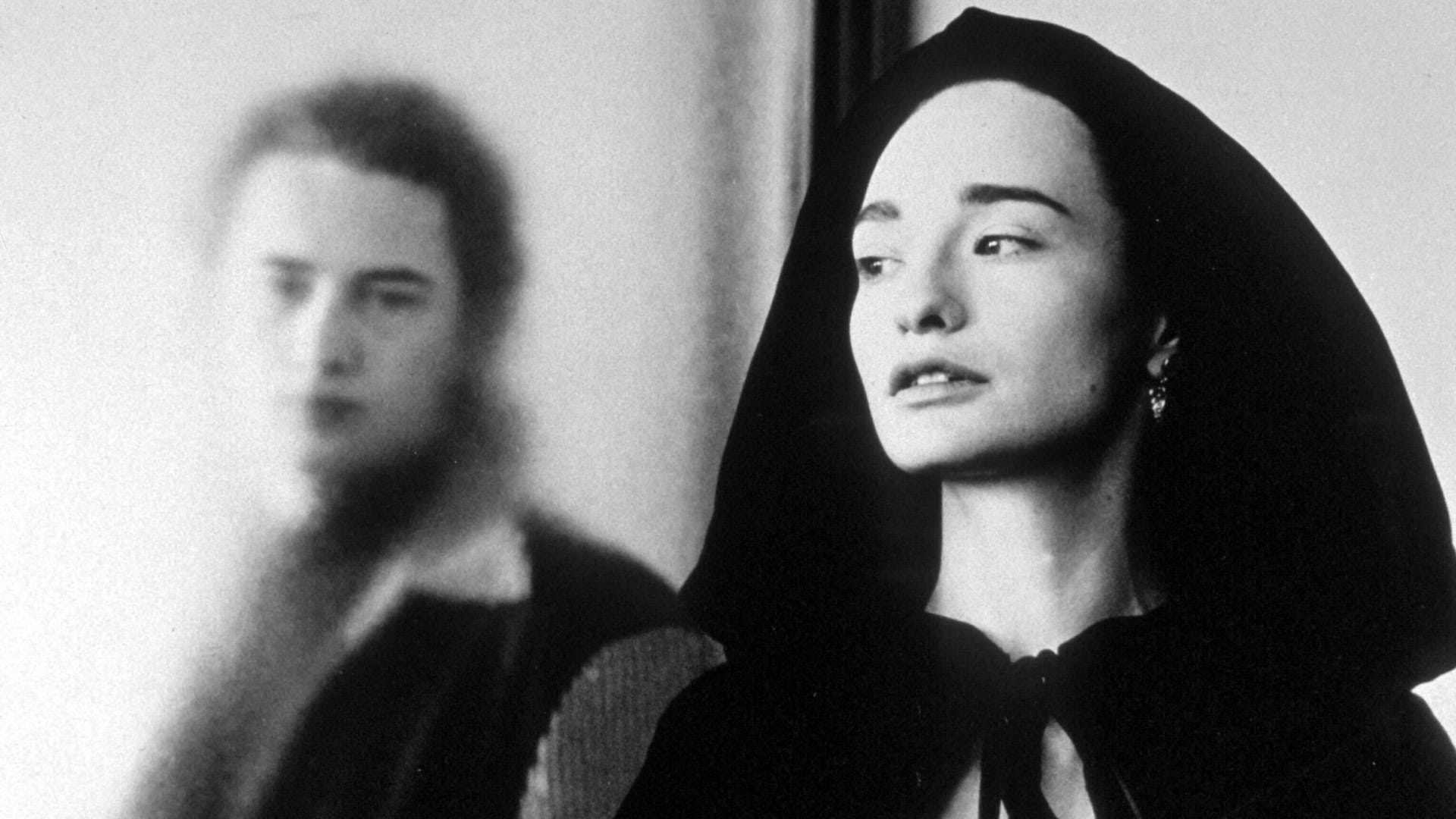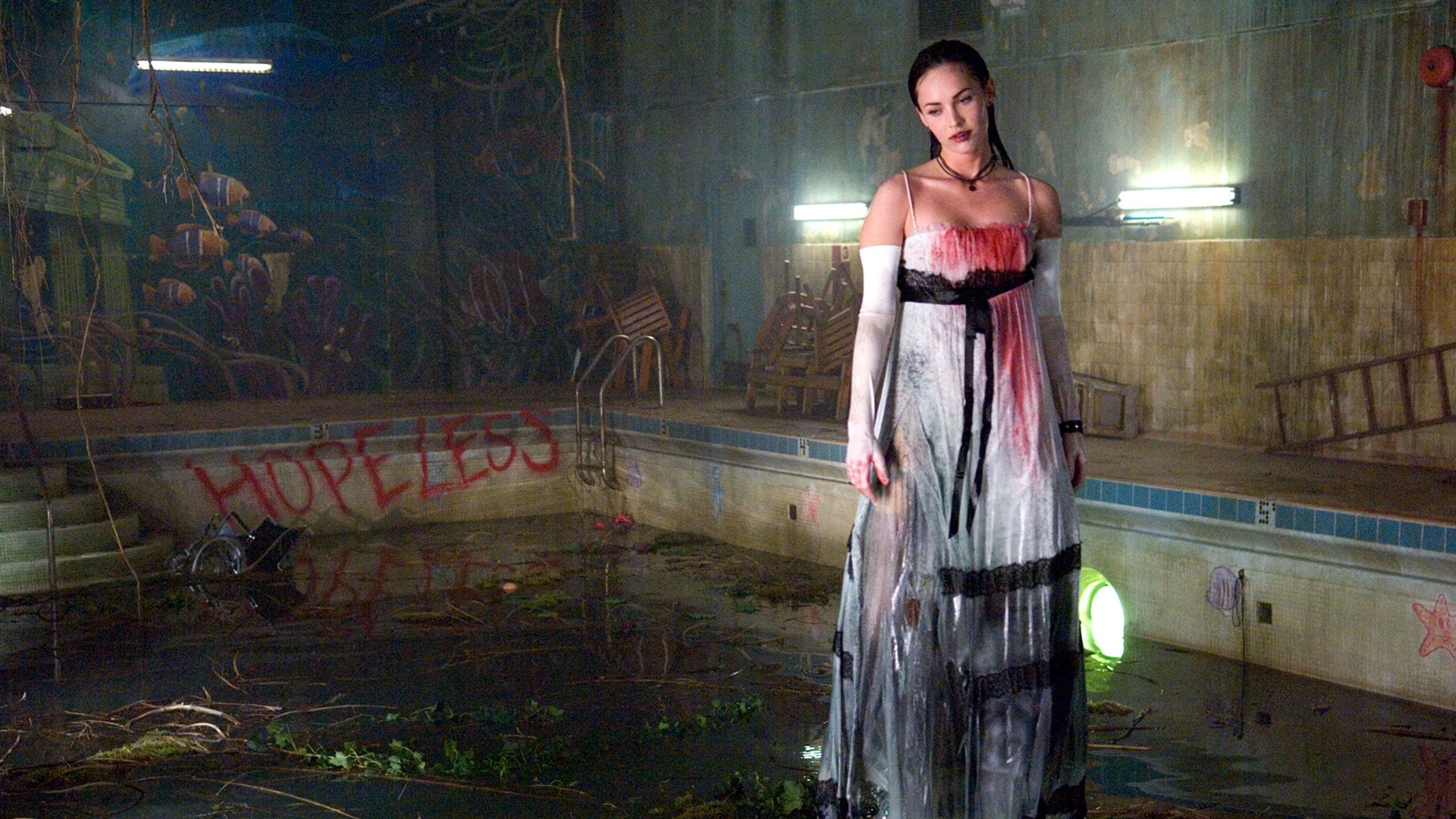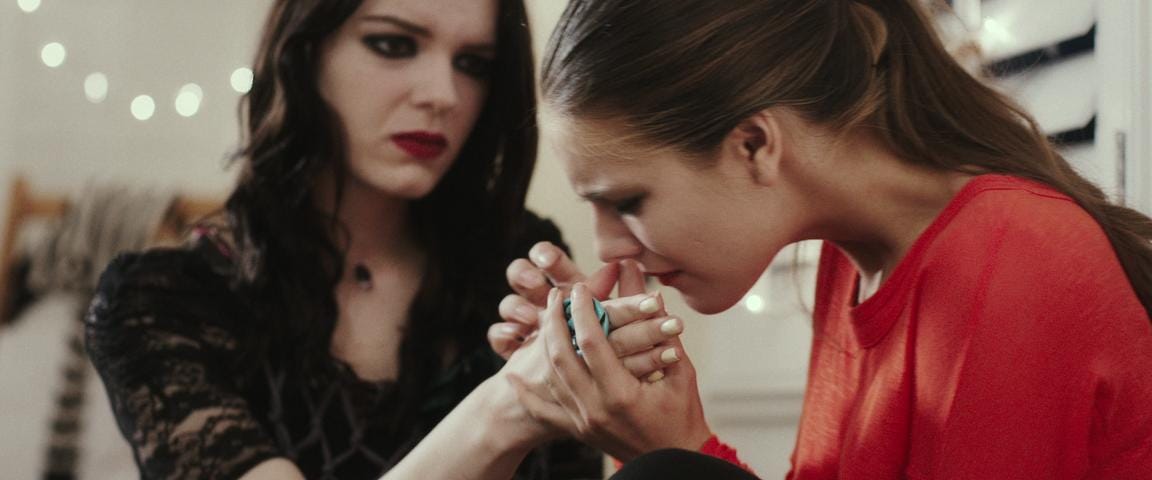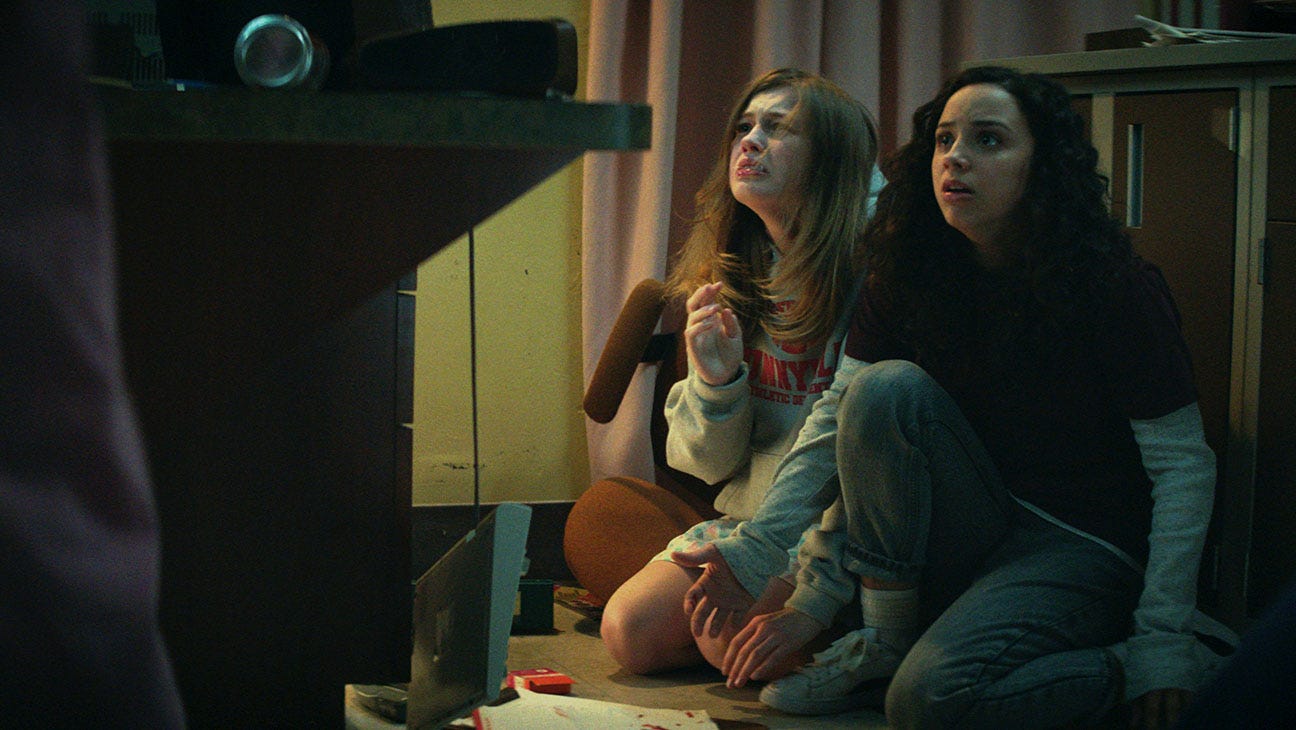Paging Dr. Lesbian - Lesbian Horror Across 10 Decades
This is the Sunday Edition of Paging Dr. Lesbian. If you like this type of thing, subscribe, and share it with your friends. Upgrade your subscription for more, including weekly dispatches from the lesbian internet, monthly playlists, and a free sticker. This post is too long for email, so read on-site or in the app. Horror movies have always reflected – or refracted – society’s fears, drawing out the cultural and political anxieties that simmer just below the surface. Changing social norms, the threat of nuclear warfare, disease – these are all subjects tackled by horror movies over the years. It makes sense then, that queerness has been a part of horror since the very beginning. Horror stories situate monsters as queer figures, living outside of the realm of social acceptability. In many ways, horror is an inherently queer genre, dealing more directly than other films with social abjection. Lesbians and queer women have a unique place within this history. When it comes to representation, they are often caught between two opposing poles – invisibility and fetishization. On the one hand, lesbian lives and lesbian stories are often ignored or erased. On the other, images of lesbians have long been used for titillation on behalf of men, a mode of depiction that denies true subjectivity. That’s not to say lesbians haven’t figured into the history of horror, however. From the lesbian vampire trope to the dangerous queer outsider, lesbian and sapphic horror characters personify society’s collective fears and desires. These beguiling women have popped up again and again over the last century, pushing up against censorship and conservatism. The following list includes one horror film from the last ten decades as a means to illustrate the position of the lesbian horror subject during each era. This way, we can consider how lesbianism has remained a subversive element within horror and how this subversion has shifted over the years. Dracula’s Daughter (1936) Though lesbian vampire films emerged as a distinct subgenre in the early 1970s, Dracula’s Daughter is an early example of this horror narrative. A follow-up to 1931’s Dracula, the film centers on Countess Marya Zaleska (Gloria Holden), a vampire seductress trying to cure herself of her “disease.” Marya even enlists the help of a psychiatrist to rid her of the affliction, hoping he can analyze the perversity right out of her – sound familiar? The Countess’ queer desire is apparent. Marya seduces victims of both genders – and even wants the psychiatrist to be her companion – but it’s female snacks that she really seems to crave. In one scene, she asks her first woman victim, Lili (Nan Gray), to remove her blouse so she can admire her shoulders. Later, she kidnaps her psychiatrist’s assistant, Janet (Marguerite Churchill). Near the end of the film, Marya slowly leans over Janet’s supine form, appearing like she might kiss her. Indeed, Marya’s thirst for (women’s) blood is almost indistinguishable from sexual desire. Though she occupies the much-maligned position of the queer villain, the Countess is also sympathetic, as she clearly struggles with her affliction. Unlike the schlocky lesbian vampire films of the ‘70s, Dracula’s Daughter gives its vampire subject a point of view, though her narrative embodies well-worn tropes. With the Hays Code in place, there was no way for Marya’s story to end in anything other than punishment, but Holden’s mesmerizing performance gives her a thrilling edge. Cat People (1942) Cat People involves a woman who fears she will turn into a cat if she kisses a man, which is a pretty lesbian predicament. Irena (Simone Simon), a fashion designer originally from Serbia, meets an all-American man named Oliver (Kent Smith). They quickly marry, but Irena worries about the curse placed on the women of her village, which states that they will transform into giant cats if they become intimate with a man. Irena refuses to consummate the marriage and Oliver becomes concerned about her mental state. Though the queer subtext is not as obvious as in Dracula’s Daughter, the film’s allusions to queer anxiety and alienation are plainly apparent. Feline curses aside, a woman’s resistance to heteronormative marriage and intimacy reads like a thinly veiled metaphor for queerness. It’s not a stretch to see Irina’s reticence as bottled-up lesbian desire. Though the film leaves much unsaid, it's easy to read between the lines. Les Diaboliques (1955) The French film Les Diaboliques takes place at a boarding school, and we all know what happens there. Michel Delassalle (Paul Meurisse), a wicked, vicious man, runs the school. The meek, fragile Christina (Véra Clouzot) has the displeasure of being married to Michel, who also keeps Nicole (Simone Signoret), another teacher at the school, as his mistress. Christina and Nicole bond over their mutual hatred for Michel and hatch a plot to get rid of him once and for all. Though Michel is the subject of the action, Christina and Nicole’s complex relationship is the driving force of the film. There is never an explicit suggestion that Christine and Nicole are anything more than friends, but the dynamics of their relationship are quite queer-coded. The push and pull between the docile Christina and the dominant Nicole generates a dangerous, almost erotic tension. The 1996 remake, which stars screen legends Sharon Stone and Isabelle Adjani, brings the queerness closer to the surface, but the original is the better film. The Haunting (1963) Theo from The Haunting of Hill House – a classic haunted house story – is one of the most enduring queer women in horror. In Shirley Jackson’s 1959 book, Theo’s queerness nearly jumps off the page. She constantly needles – and flirts – with our shy protagonist, Nell, her abrasive attitude and psychic abilities position her as an outsider, and she even lives with another woman. In the 1963 film adaptation, Theo’s lesbianism persists. Her relationship with Nell in the film is equally loaded, and they even have several intimate moments together while being tormented by spirits (seen above). Though Theo never spells out her sexual orientation in words, it’s notable that she’s never made the villain or punished for her so-called perversity. She’s confident and self-assured, even when the insecure Nell hurls insults at her. (“I’d rather be innocent than like you!” she exclaims at one point.) Catherine Zeta-Jones’ take on Theo in the 1999 remake retains her queer identity, as does, most famously, Kate Siegel’s Theo in Mike Flanagan’s loose adaptation for Netflix. It’s rather incredible that Theo has survived so long as a lesbian protagonist in horror without her essence being diluted in any way. Daughters of Darkness (1971) The 1970s was the decade for lesbian vampire films. Though most of these pictures were sexploitation B-movies – think The Vampire Lovers (1970) and Vampyros Lesbos (1971) – there were a few with slightly more artistic aims.¹ In Daughters of Darkness, arthouse legend Delphine Seyrig plays Countess Elizabeth Báthory, a centuries-old vampire succubus who feeds on young women to retain her youth. Elizabeth meets a young couple, Stefan (John Karlen) and Valerie (Danielle Ouimet), while traveling with her “secretary.” Stefan is fascinated by the alluring Elizabeth, but she only has eyes for Valerie. Elizabeth persuades Valerie to leave her troublesome husband and join her on a journey of eternal pleasure. Elizabeth may be a queer villain, but the eroticism between her and Valerie is undeniable. Seyrig’s presence in the film gives it a sense of gravitas that other films of this ilk did not have, though the narrative is quite familiar. (Elizabeth Báthory was a real Hungarian countess and alleged serial killer – her story serves as the basis of many lesbian vampire tales of this era.) The twin flames of sensuality and sadism make this bloody affair one to remember. The Hunger (1983) Tony Scott: a man, a myth, a legend. Over a decade after Harry Kümel’s Daughters of Darkness, the director came out with his own vampire drama. Perhaps best known for films like Top Gun and True Romance, Scott’s The Hunger is an erotic gothic horror film where sex and violence go hand in hand. Released in the early years of the AIDS crisis, the film looks at the pleasures – and dangers – of the flesh. French icon Catherine Deneuve plays Miriam, an ancient vampire who lives with her lover, John (David Bowie). When John begins to rapidly deteriorate – aging years in only a few days – Miriam searches for another companion. She sets her sights on Sarah (Susan Sarandon), a scientist studying the effects of aging. Miriam seduces Sarah and offers her the gift of immortality, but Sarah isn’t so sure. The Hunger marks the first instance of A-list actresses playing queer roles in a mainstream US film, and the explicit sexual encounter between Miriam and Sarah remains its most famous scene. In fact, the sex scene once played so frequently in lesbian bars that director Rose Troche decided to make her film Go Fish to give lesbians a little variety. Visually alluring and downright nasty at times, the film is an important piece of queer cinematic history. Nadja (1994) Michael Almereyda’s 1994 film Nadja reflects the style of indie and New Queer Cinema, bringing the lesbian vampire trope into a new decade. Like its 1936 counterpart, the film follows Dracula’s daughter, Nadja (Elina Löwensohn). Furious at Van Helsing (Peter Fonda) for killing her father, Nadja plots revenge against the doctor, starting by seducing his daughter, Lucy (Galaxy Craze). Nadja takes Lucy home with her after they meet in a bar, and together, they go about taking down the Van Helsing family. Set in New York’s Lower East Side, the film is an updated take on one of the most famous vampire tales of all. It’s a 90s indie in every way, with a grungy, neo-noir aesthetic and an EP assist from David Lynch (who also makes a cameo in the film). A stylish, queer take on the lesbian vampire flick, Nadja is a hidden gem of 90s cinema. Jennifer’s Body (2009) We all know the tale of Jennifer’s Body by now. Directed by Karyn Kusama with a script from Diablo Cody, the 2009 film was a flop when it premiered but has since received a critical reappraisal and gained a cult following. Marketed as a sexy horror romp aimed at teen boys, the film is actually a feminist take on horror tropes and a twisted exploration of sapphic sexuality. Amanda Seyfried plays Needy, an average high school girl. Her best friend, Jennifer (Megan Fox), is a popular, beautiful cheerleader who remains loyal to Needy despite her higher social status. When Jennifer gets possessed by a demon during a human sacrifice gone wrong, Needy becomes concerned about her friend’s behavior. Jennifer’s Body features a racy bedroom makeout scene and several iconic queer lines – “God, your butch” and the bisexual catchphrase “I go both ways” – cementing its status in the queer canon. The film is so much more than the titillating escapade it was marketed as – it’s a sexy, gross, hilarious look at just how dangerous (and gay!) teen girls can be. All Cheerleaders Die (2013) All Cheerleaders Die is not a groundbreaking masterpiece, but it is a deranged lesbian adventure, and sometimes, that’s enough. A high school movie that doubles as a rape revenge story and a zombie film, the plot is rather circuitous. Maddy (Caitlin Stasey) recently lost her best friend, Alexis (Felisha Cooper), and decides to join the cheerleading squad to get revenge against Alexis’ ex, Terry (Tom Williamson), a football player. Alexis seduces the head cheerleader in the process, which greatly angers her witchy ex-girlfriend, Leena (Sianoa Smit-McPhee). When Terry semi-accidentally kills the cheerleaders, Leena brings them back as zombies. The girls go on a rampage, killing all the football players. Meanwhile, Terry hunts down the zombie cheerleaders and lesbian drama ensues. While the writing leaves something to be desired, the film is ultimately a lesbian love story and a reminder that girls rule, boys drool. It was quite rare in 2013 for a horror film to have a lesbian protagonist – and multiple lesbian romances – so it’s no wonder this film gained a passionate queer fanbase despite middling reviews overall. Leena’s witchy tricks also reverse the Bury Your Gays trope more than once, so three cheers for gay zombies. The Fear Street Trilogy (2021) Leigh Janiak’s Fear Street trilogy is a classic supernatural slasher with a queer twist. The early slasher flicks of the 70s and 80s established a set of central tenets, rules that became so canonized they are constantly referenced in the semi-parodic Scream franchise. Characters who have sex die first, black characters die first, and queer characters don’t survive (or exist) either. Fear Street self-consciously reverses these tropes, giving its queer protagonists the kind of hero's journey we don’t often see. In the first film, Deena (Kiana Madeira) and Sam (Olivia Scott Welch) are high school students and ex-girlfriends in 1994. Their small town is plagued by a series of murders stemming from an ancient curse, and when Sam becomes possessed, Deena investigates the history of the curse, leading to the next two films in the series (1978 and 1666). Deena – a black, gay protagonist who has sex with her girlfriend – is one of the only characters to survive. In fact, it’s Deena’s otherness that allows her to become the hero of the story and better understand the curse – it’s a power, rather than a hindrance. 1 Most of these films were also directed by men, with a few exceptions. Stephanie Rothman’s The Velvet Vampire is a great example of a feminist take on the genre. You’re a free subscriber to Paging Dr. Lesbian. For the full experience, which includes weekly dispatches from the lesbian internet, become a paying subscriber. Your support means a lot! |
Older messages
Lesbian Film Spotlight: It's in the Water (1997)
Sunday, October 1, 2023
It's almost a camp classic
dispatch from labor wins
Wednesday, September 27, 2023
and something about a legend retiring
12 Movies to Watch This Fall
Sunday, September 24, 2023
🍁🍁🍁
Queer Theory 101: A Tale of Two Melancholias
Sunday, September 17, 2023
The straight kind and the gay kind
Katie McGrath: Anatomy of a Lesbian Icon (Part 2)
Sunday, September 10, 2023
On the labor of love
You Might Also Like
Meghan Markle Nailed The Easy Spring Outfit Of Our Dreams
Thursday, March 6, 2025
She met up with Serena Williams for a casual lunch date. The Zoe Report Daily The Zoe Report 3.5.2025 Meghan Markle Nailed The Easy Spring Outfit Of Our Dreams (Celebrity) Meghan Markle Nailed The Easy
What I Learned From a 30-Minute Recomp Workout
Wednesday, March 5, 2025
View in Browser Men's Health SHOP MVP EXCLUSIVES SUBSCRIBE What I Learned From a 30-Minute Recomp Workout What I Learned From a 30-Minute Recomp Workout Dr. Pat Davidson's 'Double-Deuce
What People Are Getting Wrong: Measles Myths
Wednesday, March 5, 2025
3 Roth IRA Rules to Know During Tax Season. It turns out that hosting "measles parties" is a bad idea. Not displaying correctly? View this newsletter online. TODAY'S FEATURED STORY What
‘My Friends Abandoned Me When They Had Kids’
Wednesday, March 5, 2025
Today in style, self, culture, and power. The Cut March 5, 2025 ADVICE 'My Friends Abandoned Me When They Had Kids' You need to pick one or two friendships and fight for them. The rest are
Sydney Sweeney Wore A Super Sparkly Dress With Cutouts After The Oscars
Wednesday, March 5, 2025
Plus, the hilarious Chelsea Handler, your daily horoscope, and more. Mar. 5, 2025 Bustle Daily Chelsea Handler shares four of her favorite books. Bustle ONE NIGHTSTAND Why Chelsea Handler Has No
The ultimate guide to instant noodles
Wednesday, March 5, 2025
Inside the closure of LA institution The Original Pantry Cafe
Save the Date for Poetry & the Creative Mind
Wednesday, March 5, 2025
Thursday, April 24, 2025 View this email in your browser Twitter Facebook Website Copyright © 2025 The Academy of American Poets, All rights reserved. You are receiving this email because you opted in
Is This The Best Serum For Dark Spots Yet?
Wednesday, March 5, 2025
According to Clinique, yes. Mar. 5, 2025 Bustle Daily Clinique's New Clinical Dark Spot Serum Is A New Era In Even Skin Presented by Clinique Clinique's New Clinical Dark Spot Serum Is A New
Win the ultimate bedroom makeover! Enter now!
Wednesday, March 5, 2025
The Sleep More Sweepstakes
Urbanism And Lent
Wednesday, March 5, 2025
Pleasurable things can also be constructive ͏ ͏ ͏ ͏ ͏ ͏ ͏ ͏ ͏ ͏ ͏ ͏ ͏ ͏ ͏ ͏ ͏ ͏ ͏ ͏ ͏ ͏ ͏ ͏ ͏ ͏ ͏ ͏ ͏ ͏ ͏ ͏ ͏ ͏ ͏ ͏ ͏ ͏ ͏ ͏ ͏ ͏ ͏ ͏ ͏ ͏ ͏ ͏ ͏ ͏ ͏ ͏ ͏ ͏ ͏ ͏ ͏ ͏ ͏ ͏ ͏ ͏ ͏ ͏ ͏ ͏ ͏ ͏ ͏ ͏ ͏ ͏ ͏ ͏ ͏ ͏ ͏ ͏ ͏

